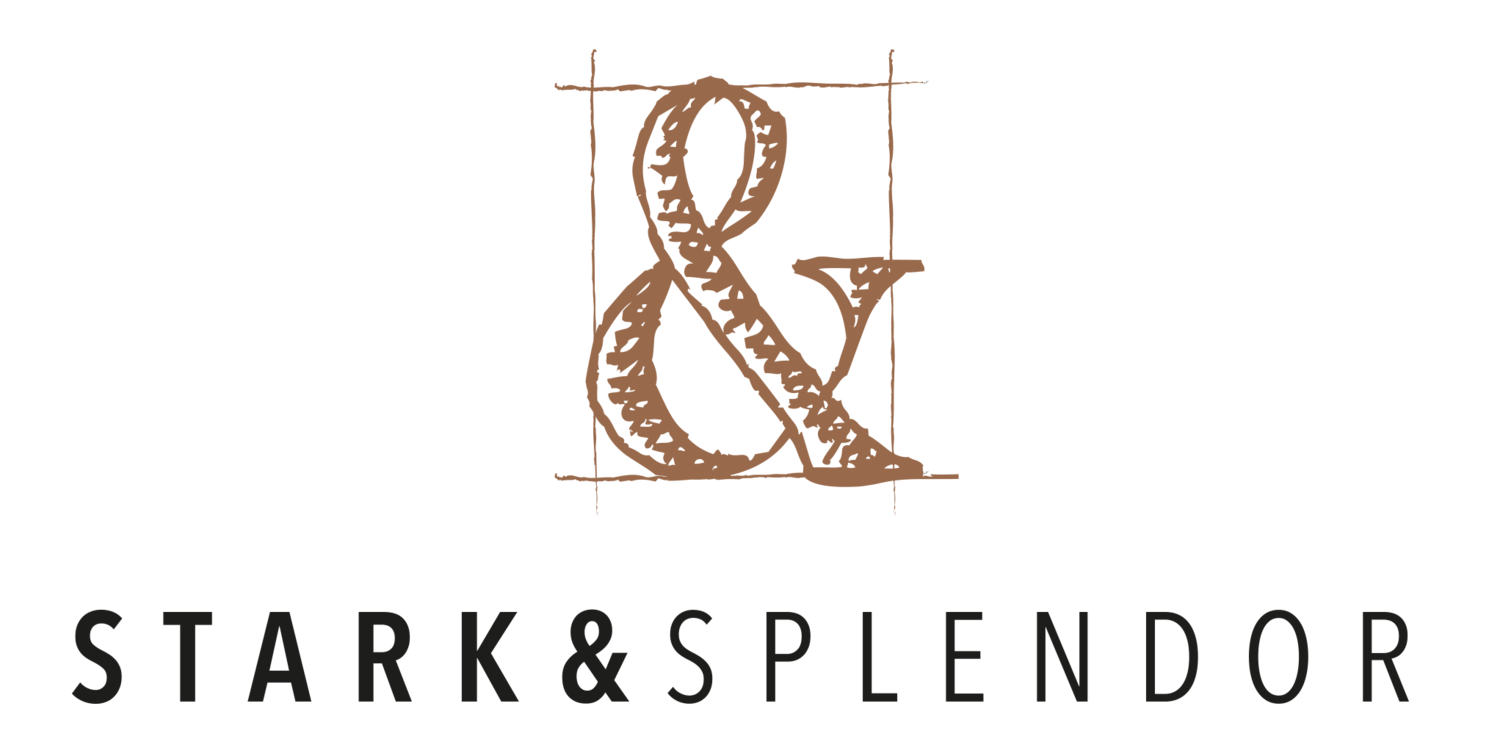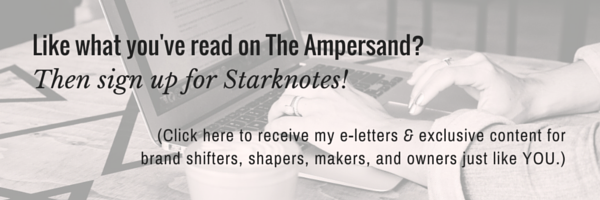An entrepreneur has a lot on her plate. Between developing her products, fine-tuning her services, securing funding, finding reliable suppliers, and landing customers, going through an in-depth branding exercise often falls by the waysides.
She goes to market with her product, a stylish logo, a simple yet slick website, and all the passion in her heart, but it’s not long before she realizes something is missing…
SCENE 1 // The first clue comes when she meets up with old colleagues who ask about her exciting new venture. She shares about it enthusiastically but quickly realizes she’s rambling and Can’t. Quite. Cut. To. The. Chase. She leaves drinks feeling like she undersold her passion and wonders why it was so difficult to talk about her expertise. {Ugh}
SCENE 2 // The next clue comes when she sits down to write her weekly blog post. She opens up her laptop, finds home row, stares at the blinking cursor, and… nothing. She has nothing to write. It seems her launch excitement has given way to a bad case of “bloggers block.”
SCENE 3 // To break the tension and “search for creative inspiration,” she heads over to her trusty friend Instagram. She remembers that she needs to update the description on her profile tab. As she scans her pictures, she’s struck by how her posts are a messy mash up of quotes in contrasting fonts, fuzzy day-in-the-life captures, #annoyinglylonghashtags that are unrelated to her business or audience, and far too many food pics [fine if you are in the biz, not fine if you are selling stationary like she is.] Most troubling is that she secretly wonders if she’d follow her own account if given the chance.
These scenarios have our intrepid ‘trep wondering: “What on earth am I really trying to say???”
Does this sound familiar? If I’m honest, I know this has been me on more than one occasion. I’ve found myself asking, “What’s my point?” “What’s my big idea?” and “What did I just communicate about my brand…really?”
I have found that a common culprit in these situations and others like them is missing-in-action brand messaging.
When our messaging is MIA...
1. We tend to undersell our value
2. Content creation becomes a chore and
3. Our audience is confused about who we are and what we do.
None of this helps our chances at business success.
This begs the question, what is brand messaging and how do I create it?
Technically speaking, brand messaging is a collection of written statements that form the foundation of a business’ communication strategy. Over the years marketing scholars and practitioners have developed many different frameworks for arriving at messaging and formatting it, but at a minimum your statements should articulate:
- Why you do what you do
- What you care about
- How you work your magic
- Who your magic helps or delights
- How you differ from the competition
- The language used to describe your products and/or services and
- How you share [tone and voice] about all of the above
Solid brand messaging is your first port of call on the journey towards creating a meaningful brand. This matters because, as Simon Sinek says, “people don’t buy what you do, they buy why you do it.”
In other words, people buy your purpose.
Smart messaging articulates your purpose, which is what gives meaning to what you do and sell [not to mention your logo and visual identity].
Everyone who shapes your brand – that’s actually everyone who works in your business [and even some that don’t] – must know your purpose and messaging in order to “sell” and build the right thing. Codifying your meaning into a living, breathing, working brand messaging document will go a long way in helping you get everyone on the same page.
There is much more to say on this topic, so I’m starting the multi-part Articulation Series here on The Ampersand. In each post we will unpack how to translate the heartbeat of a brand into words.
You will learn:
- Tips for uncovering and articulating your purpose and vision.
- The essential elements of a brand messaging guide (e.g. positioning statement, brand values, essence, etc.) and what each is intended to accomplish.
- How to write your product or service key messages.
- How to practically use your brand messaging to create content for your brand [because it is not okay to just copy and paste your messaging onto your website].
- And much, much more!
This just might be my favorite topic to read and write about, so I hope you’ll join me as we explore the heartbeat of our brands because if you want to get clear on your business' purpose and meaning, brand messaging is what will get you there.
Tired of going solo?
This series will be a great primer for DIYing your own brand messaging, but if you have tried going solo before with less-than-stellar results Stark & Splendor’s Articulation Intensive might be just for you.
In this 4-to-6-week program we craft words and ideas that powerfully express your brand's purpose and personality to rally your teams and audiences around why you matter.
To chat about your brand messaging needs, contact me at steph@starkandsplendor.com.

















